14 Winter Camping Hacks For Extra Comfort
It’s never easy to go camping in the winter as it is to do it in the summer. This list of winter camping hacks should start to make things easier.
Staying warm and being prepared for excess snow is crucial in winter camping. So, most hacks revolve around thermal protection.
Winter Camping Hacks – 12 of Our Best Tips & Hacks
1. Bring an emergency blanket
Like any activities in the winter, you want to be prepared. Emergency blankets are very small to pack these days and they can save you as an individual survival blanket.
2. Bring a survival snow shovel
If you’re going to be out for more than a few hours, you never know when it’s going to snow heavily. Or when your car would have trouble getting out of an innocent-looking snow bank.
Survival shovels are unique that they fold to make it more portable so you have more space for tother things. They also have a few extra features like a whistle and saw.
3. Use hand warmers in the sleeping bag
Hand warmers can prove handy for other parts of the body. These small accessories provide instant warmth. Winter campers often use them in socks to keep their legs warm. But hand warmers can also be kept in the pockets or inside the sleeping bag for extra warmth.
It’s always wise to buy extra hand warmers in winter camping. These can be useful inside the sleeping bag or even in the pockets of your clothes. You can wear these while trekking during the day as well.
4. Use hot water bottles in the sleeping bag to stay warm
The old method of using warm water bottles to stay warm remains the best and cheapest solution for extra warmth during the night. You can use just about any regular water bottle with warm water to keep your upper body or your lower body warm. These water bottles tend to stay warmer when they’re used in sleeping bags as heat makes its way out slower.
You can wrap a sweater around it for comfort, or get one that comes with a hot water bottle sweater.
The trick is to variate the type of bottles used here. Thinner water bottles provide more instant heat but they cool faster. Thicker or insulated water bottles come with less heat but they tend to maintain water warm longer.
5. Consider using a wind tarp next to the tent
Wind tarps are a life-saver in winter camping. Extra wind tarps attached further from the tent stop some of the wind from going to the tent. They keep snowfall away from the tent and they ultimately help stay warmer when camping.
The tent’s location is crucial to installing a wind tarp. It’s best to find trees to tie the wind tarp down as it needs to hold up strong winds. The tent can be up to a few feet away from the tarp, but it’s best to limit this distance to stop wind from making its way to the tent altogether.
6. Melt snow for water
Camping in remote areas comes with endless pristine snow. It can be melted and used as drinking water. Many campers consider melting snow as the primary source of water or as a secondary source of water in wintertime camping.
A small portable camping stove is sufficient to turn a large pot of snow into water. The best part is this snow is often found in infinite amounts, ideal for campers who stay at least a few days in the outback.
7. Open tent vents
The tendency to seal up all vents, doors, and holes in the winter is explainable. However, closing off all of them off too quickly leads to condensation inside the tent. This can be troublesome when trying to stay dry during the night. It’s recommended to keep tent vents open even when camping in the winter. This helps you avoid having too much condensation on the inside walls of the tent.
Open vents also provide fresh air, still important for comfort and health. Constant high condensation inside the tent eventually leads to mildew formation. This can be difficult or almost impossible to fix when it appears inside the tent.
8. Dress in layers
The dressing is crucial in the wintertime. You can find all types of camping clothes appropriate for wintertime hiking and camping.
However, dressing in layers is crucial to staying warm and protecting your body from the cold weather.
A base layer, a warm mid-layer, and a top layer are necessary for wintertime camping. Clothes that are layered are also easy to take off.
The base layer is crucial as it wicks moisture away from your body, essentially keeping you warm.
The mid-layers adds warmth while the outer layer keeps you dry as it should be waterproof.
9. Eat more food
One of the best winter camping hacks is simply to eat more food and drink more water. Energy expenditure can be high during the wintertime. This is why it’s important to consider all types of food so that there’s sufficient caloric intake for the days spent camping.
Snacks and dry food can be a good source of calories without taking up too much space inside the tent. Fresh food such as vegetables can be a great addition to camp cooking. It takes effort to clear snow around the tent and to make your way around trails in deep snow. This effort can only be sustained by a higher caloric intake.
10. Dry the socks
Wet socks are one of the most common problems in wintertime camping. Packing extra pairs of socks and drying wet socks next to a wintertime campfire is mandatory. This avoids all types of common issues, especially suffering from cold feet.
11. Dig a pit for snow-covered boots
Many campers tend to bring their snow-covered boots inside the tent. But this only creates a puddle of water in the tent. The problem is simply dealt with by keeping snow boots outside. The easiest way to place boots is right in front of the tent.
A small pit dug in front of the tent offers the ideal place to put boots on and keep them out of the wind at the same time.
12. Choose the right winter camping tent
Winter camping tents are the most important purchase to make for cold weather camping. All-weather tents are made for summer and fall camping.
Wintertime camping tents are made with thicker materials for better insulation. Canvas materials are superior to nylon for comfortable wintertime camping.
The right winter tent is also large. It has to store all personal belongings such as backpacks, camping stoves, and clothes to keep them dry and out of the snow. It’s ideal to get a larger tent than the regular summertime tent for winter camping.
13. Buy camping gear in the summer at a lower price
Winter campers can start by getting all the gear they need at a discounted price in the off-season. Buying winter camping gear is ideal in the summer. It’s at this time that you can get discounted tents and cheaper winter camping clothes.
14. Keep batteries warm
Technology changes camping constantly. But power is needed from having a handheld GPS to using tablets to watch a movie late at night. Batteries and cold temperatures don’t go hand in hand. This is why it’s important to keep batteries out of the cold as much as possible.
The best way to protect batteries from low temperatures is to wrap the devices in camping clothes or towels. This adds a layer of thermal protection that prevents instant battery drainage out in the cold. At the same time, batteries can be protected by only taking out devices such as tablets in the tent, away from snow, wind, and cold weather.
Takeaway
Essentials like a winter camping tent and a survival snow shovel are some of the things you’ll want to keep in mind.
Some of these winter camping hacks offer immediate results without much effort. It’s often best to find simple quick solutions for the many problems wintertime camping comes with.
By following these tips, campers can continue going outdoors and enjoying fresh air even in the winter.

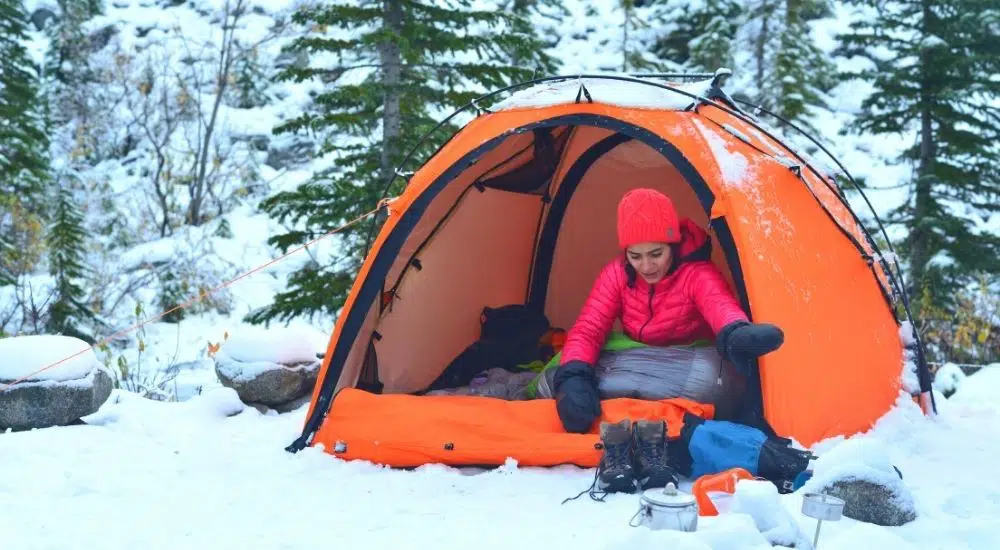
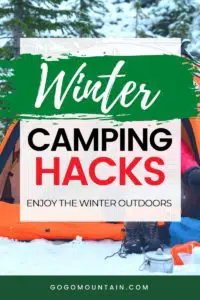


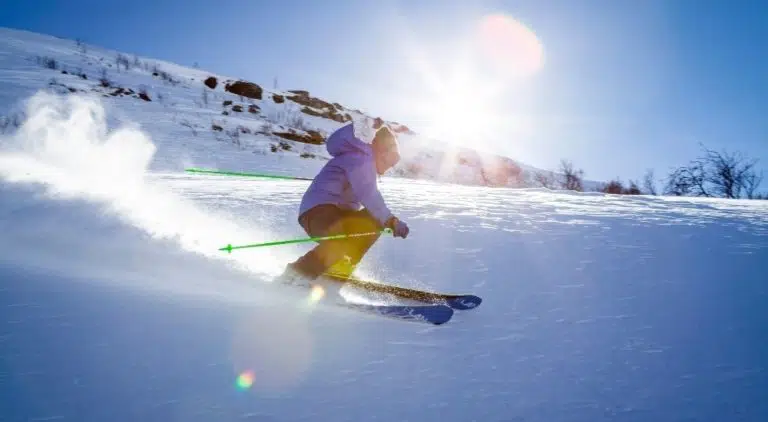
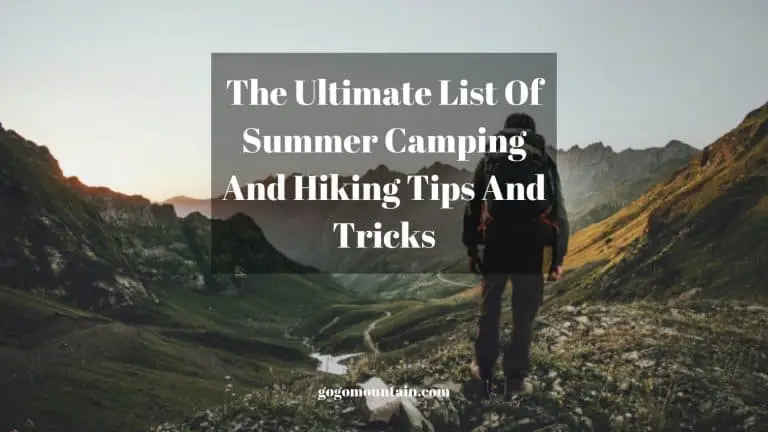
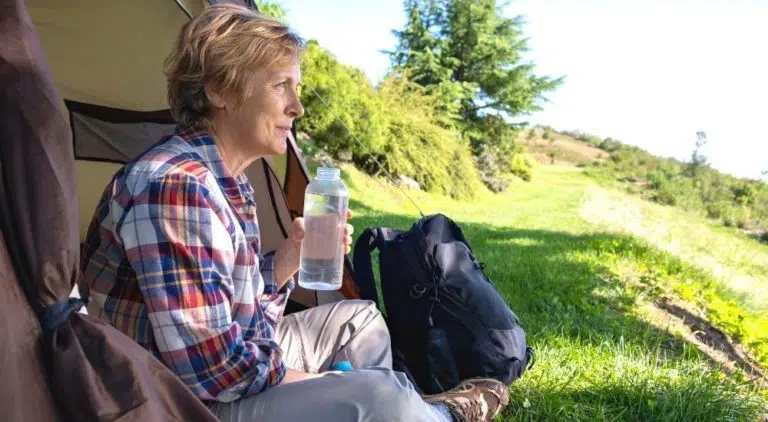
![Canway Double Sleeping Bag Review [2022] Is it worth it?](https://gogomountain.com/wp-content/uploads/2019/01/The-Double-Sleeping-Bag-by-Canway-Review-1-768x432.jpg.webp)

